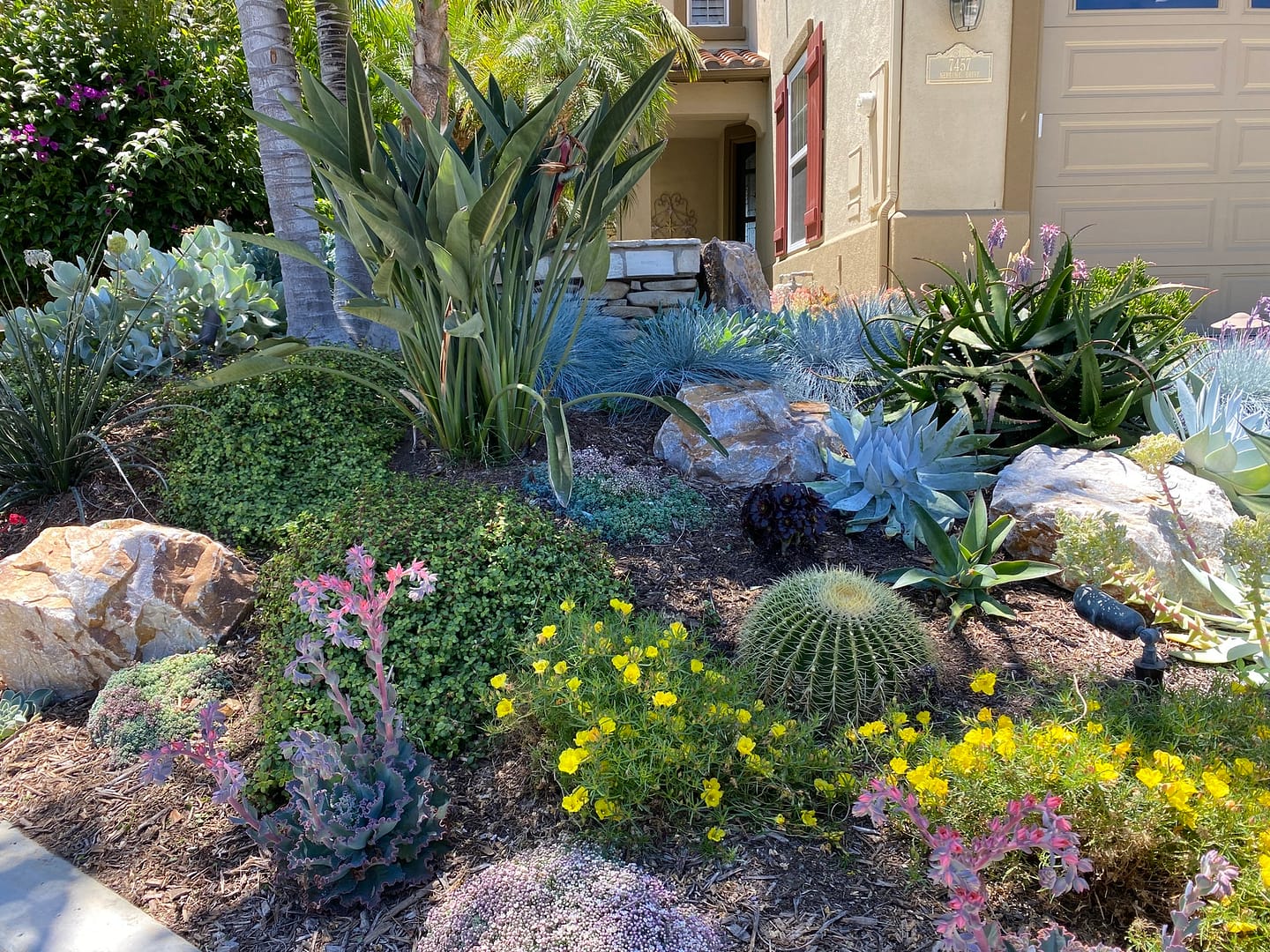Drought-Proof Dallas: Home Water Conservation Tips
Are you interested in making your home more water-efficient?
In ‘Drought-Proof Dallas: Home Water Conservation Tips,’ you’ll find practical strategies to help conserve water and support a more sustainable Dallas. This guide provides simple yet effective tips for your home and garden, acting as a roadmap to create a greener, more drought-resistant oasis.
You’ll discover everything you need to become a water-saving champion, from efficient watering techniques to leak detection.
Together, let’s work towards making Dallas a city that’s resilient to drought.
Key Takeaways
Are you looking to make your home more water-efficient? In the guide “Drought-Proof Dallas: Home Water Conservation Tips,” you’ll find practical strategies to help conserve water and support a more sustainable Dallas. This guide offers simple yet effective tips for your home and garden, serving as a roadmap to create a greener, more drought-resistant oasis. It covers everything you need to become a water-saving champion, from efficient watering techniques to leak detection. Let’s work together to make Dallas a city that’s resilient to drought.
Assessing Water Usage
Assessing your water usage is essential for managing costs and conserving resources. One way to do this is by comparing your current monthly water bill with the usage from the previous year. This simple comparison can reveal any significant increases or decreases in your water consumption.
If you do notice a notable difference, it could be a sign of a potential issue, such as a leak. To estimate your monthly water bill based on your usage, you can use the DWU calculator on DallasCityHall.com.
Monitoring your usage in this way can help you understand your current consumption patterns and identify any false increases in usage promptly, saving you money and helping to conserve water. By staying proactive and regularly keeping an eye on your water bill, you can take control of your water usage and contribute to conservation efforts in Dallas.
Efficient Indoor Fixtures
When you evaluate your water usage, consider upgrading to water-efficient fixtures like low-flow toilets, faucets, and showerheads. This simple step can significantly reduce indoor water consumption and help conserve water in Dallas. Additionally, it can lead to savings on your utility bills.
Here are a few water-saving technologies and eco-friendly fixtures to consider for your home:
- Install WaterSense-labeled toilets using 1.28 gallons per flush
- Opt for faucets with aerators to reduce water flow
- Switch to low-flow showerheads for water savings
- Upgrade to Energy Star-rated appliances for long-term water and energy savings
- Consider using water-efficient appliances for a more eco-friendly home.
Outdoor Watering Techniques
When it comes to saving water outdoors, you can make a big impact by adjusting your lawn watering habits and using efficient irrigation methods. Opt for sprinklers that distribute water evenly and reduce evaporation. Consider setting a schedule for watering to ensure your lawn gets the right amount of water. Keep an eye on the moisture in the soil to avoid unnecessary watering, and adjust your routine based on rainfall.
Take advantage of Dallas’s offer for a free irrigation system check-up to make sure it’s working well. Also, use mulch around trees and plants to retain soil moisture, which reduces the need for frequent watering.
These outdoor watering techniques play a crucial role in conserving water and contribute to making Dallas more drought-proof.
Xeriscaping for Dallas Homes
Transform your Dallas home with xeriscaping, using practical turf alternatives and drought-tolerant plants to save water and establish a sustainable landscape. Opt for water-wise landscaping and water-efficient irrigation to convert your outdoor space into a flourishing, low-maintenance sanctuary.
Here are some tips for xeriscaping in Dallas:
- Use drought-resistant plants to reduce water usage.
- Select native or adaptive plants suitable for Dallas’ climate to create a resilient landscape.
- Utilize ground covers, shrubs, decks, or patios as practical turf alternatives.
- Apply mulch to conserve water and prevent weed growth in your xeriscaped areas.
- Implement water-efficient irrigation systems to ensure optimal water distribution.
These xeriscaping practices enable you to craft an attractive, sustainable landscape while conserving water resources.
Next, let’s delve into the benefits of ‘rainwater harvesting systems’.
Rainwater Harvesting Systems
Rainwater harvesting systems offer numerous benefits for your home, helping to conserve water and promote sustainability. One simple and effective method is to install rain barrels, which capture and store rainwater from your rooftop. These barrels provide an eco-friendly way to reduce runoff and support your landscape’s irrigation needs.
Additionally, incorporating cisterns into your rainwater harvesting system can further expand your rainwater storage options. By integrating rainwater harvesting into your water-wise landscaping plan, you can boost self-sufficiency and reduce reliance on traditional water sources.
Embracing rainwater harvesting systems not only aids in water conservation but also plays a crucial role in supporting environmental efforts, particularly in drought-prone areas like Dallas.
Leak Detection and Repair
Water wastage can be prevented by promptly fixing any leaks in your home using the right tools and materials. Here are some tips to help you with leak detection and repair:
- Monitor your water meter to track any unusual usage patterns.
- Use do-it-yourself methods like checking for water stains, mold, or mildew to detect leaks.
- For complex or hidden leaks, consider hiring professional plumbing services.
- Regularly inspect and maintain plumbing fixtures to prevent leaks.
- Address leaks promptly to save water and prevent potential damage.
Being vigilant in leak detection and repair can significantly reduce water wastage in your home.
Now, let’s explore lifestyle changes that can further contribute to drought-proofing Dallas.
Water-Saving Lifestyle Changes
If you want to save water, start by replacing your old, water-wasting fixtures with high-efficiency toilets, faucets, and showerheads. This can help lower your water usage and bills.
Additionally, adopting water-saving habits and using water-efficient appliances can significantly reduce your water consumption.
You can also consider sustainable landscaping practices, like planning areas for different water amounts and using native drought-tolerant plants to create a low-maintenance, water-wise landscape.
These changes not only contribute to water conservation efforts but also lead to a more sustainable and eco-friendly lifestyle.
Frequently Asked Questions
What Is Best Way to Conserve Water During Drought?
During a drought, the most effective way to save water is by investing in drought-resistant landscaping, installing efficient appliances, and harvesting rainwater. These methods not only help conserve water but also promote a sense of community and environmental responsibility. For example, drought-resistant landscaping reduces the need for excessive watering, while efficient appliances minimize water usage without compromising functionality. Harvesting rainwater also provides a sustainable water source for various purposes, further contributing to water conservation efforts.
What Is the Best Way to Save Water at Home?
Saving water at home is crucial for both the environment and your wallet. You can do this by using water-efficient appliances, planning water-wise landscaping, and installing rain barrels. It’s important to water plants efficiently, fix any leaks, and stick to a watering schedule. To conserve water, consider choosing native plants and grouping water-loving ones together. These simple changes can make a big difference in water conservation at home.
How Can Homeowners Conserve Water?
Looking to save water at home? You can achieve this by using smart irrigation, reusing greywater, and planting drought-resistant landscaping. These practices not only help you conserve water but also play a crucial role in creating a sustainable environment for everyone. For example, using smart irrigation systems can significantly reduce water waste by automatically adjusting to weather conditions and soil moisture levels. Additionally, reusing greywater from activities like laundry and bathing for tasks such as watering plants can make a substantial impact on water conservation. Lastly, planting drought-resistant landscaping, such as native plants and grasses, can thrive with minimal water, further contributing to water conservation efforts. By implementing these strategies, homeowners can make a tangible difference in preserving this valuable resource.
What Are Some Water Conservation Tips?
Water conservation is crucial for the environment and your community. You can help by using rainwater harvesting, xeriscaping, and greywater recycling to reduce water usage and create a sustainable home environment. These methods contribute to water conservation efforts and make a positive impact on the environment.







